An iconic summertime species and a favorite of both shore- and boat-based anglers The common mackerel is a welcome catch for both eating and using as bait. It also makes for excellent sport when fished with light gear. This schooling pelagic fish can be abundant and simple to catch when it’s present. Here are some pointers for kayak fishing them:
How to catch mackerel | 11 tips
Mackerel often follow in the tide as it pushes in. The commercial fishing boats in my local harbor frequently catch mackerel about 100 meters offshore about 2-3 hours before high tide, and we start fishing from the harbor in the two hours before high tide. Low tide can be a good time for mackerel fishing, but your chances are much, much lower. Check the tide at BBC Tides, then plan to fish the tide two hours up and then two hours down.
Spring tides occur when the tide comes in more fully than usual and then fully retreats. They have nothing to do with spring time. These appear as large lumps on BBC Tides because they resemble larger oscillations. Mackerel fishing on spring high tides is often excellent.
You probably won’t catch any mackerel at night because they are sight feeders. However, they feed more actively at night and in the morning than they do otherwise. Who knows? Perhaps after going without food all night, they become hungry in the morning, and in the evening, they are eager to eat one last meal before it gets dark.
But if you rise very early in the summer and fish at first light, you will catch more fish. Additionally, you will catch more during the three hours before sunset than during the midday sun. Mackerel may be more cautious under the bright sun because they are more visible to birds and other predators.
You shouldn’t cast mackerel feathers over uneven ground, such as over weeds and rocks, if you’re using them. That’s because using 4-6 hooks increases your risk of getting stuck in snags you can’t get out of, losing your rig, and polluting the sea with plastic and hooks.
There is no need to fish over rough ground for mackerel because they feed on both clean and dirty ground. To lessen your risk of getting snagged when fishing over uneven terrain, I advise using a single lure or spinner. Pull the rod sharply upwards to escape snags; don’t apply pressure gradually; act quickly and forcefully for the best chance of success.
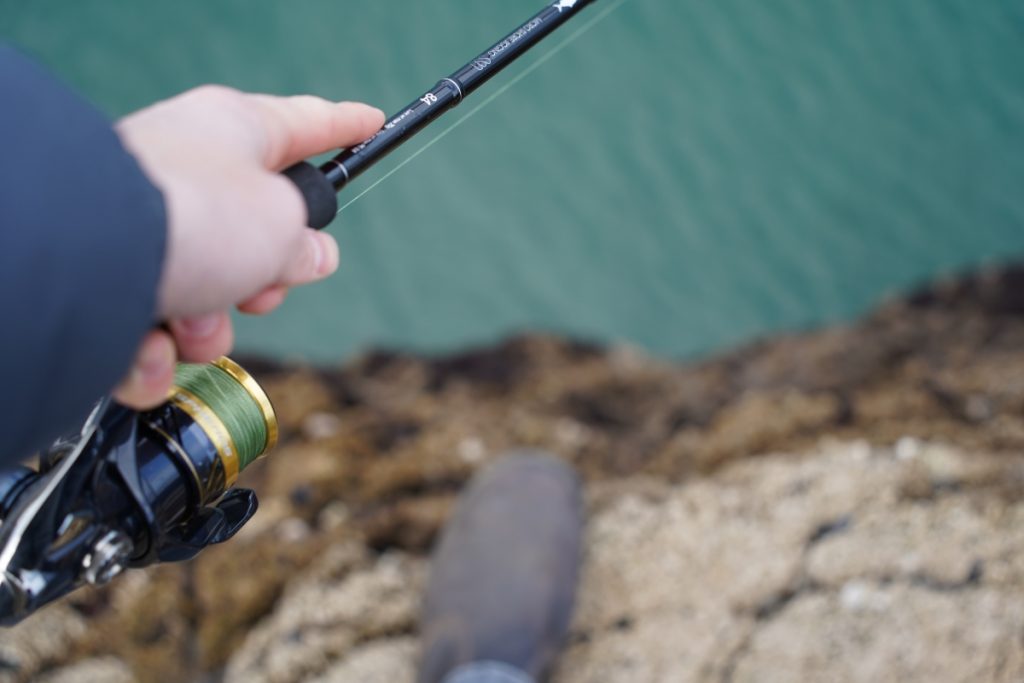
Because they are a pelagic species, mackerel scour the open ocean for food. Mackerel are less concerned with structure than the majority of the other species we catch in the UK. They don’t spend as much time near harbors, wrecks, or other notable underwater features as many other species do.
They are also more often found in slightly deeper water. You have a better chance of landing mackerel if you cast into water that is at least 5 meters deep as opposed to 3 meters deep. You still have a better chance if you’re fishing in 20 meters of water. In fact, mackerel actively try to chase baitfish up onto the beach in order to corner them. They will feed in as little as a few inches of water. However they don’t spend most of their time there.
Going fishing while on vacation from a random beach you don’t know would be a rookie mistake because it’s unlikely you will catch mackerel in the shallows unless it’s a beach that gets deep fairly quickly, like Chesil Beach, or a beach that is known for mackerel fishing. Because of this, people congregate in harbors, and more seasoned anglers might look for deep water rock marks to escape the crowds while still having access to deep water.
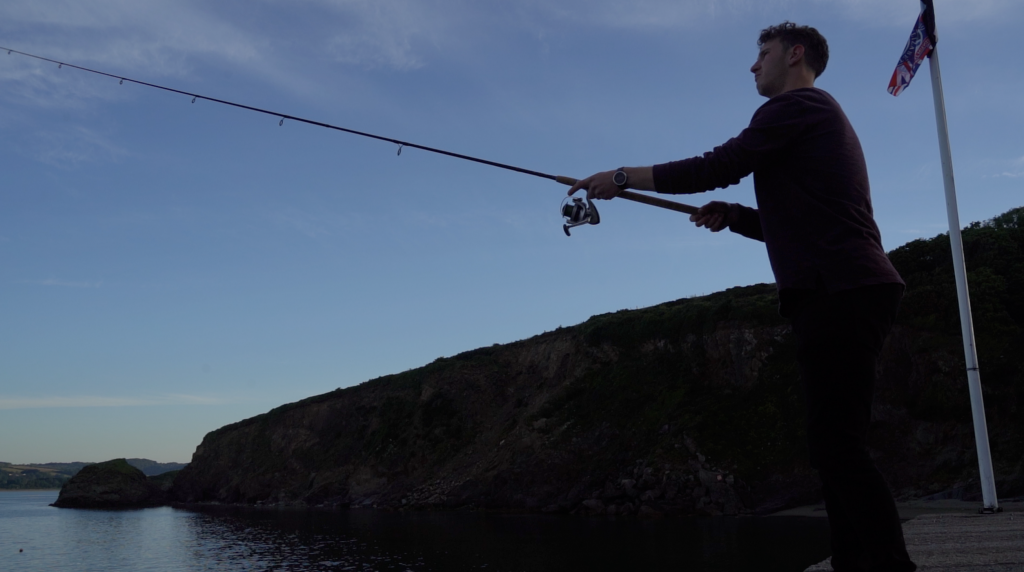
Mackerel probably die after being handled. Their oily skin reacts badly to human touch and is irritated by the oils in our skin. When using single lures, especially with disgorgers, it’s possible to release mackerel without ever touching the fish when using single lures, especially if you need them for bait or a large BBQ the next day.
The best method for killing mackerel is to place your finger on the inner mouth’s roof before quickly bending the head backwards. The neck is fragile and snaps like a toothpick, resulting in death and barely perceptible twitching. Additionally, when the gills are torn, the fish bleeds, improving the flavor and slowing the rate at which they spoil.
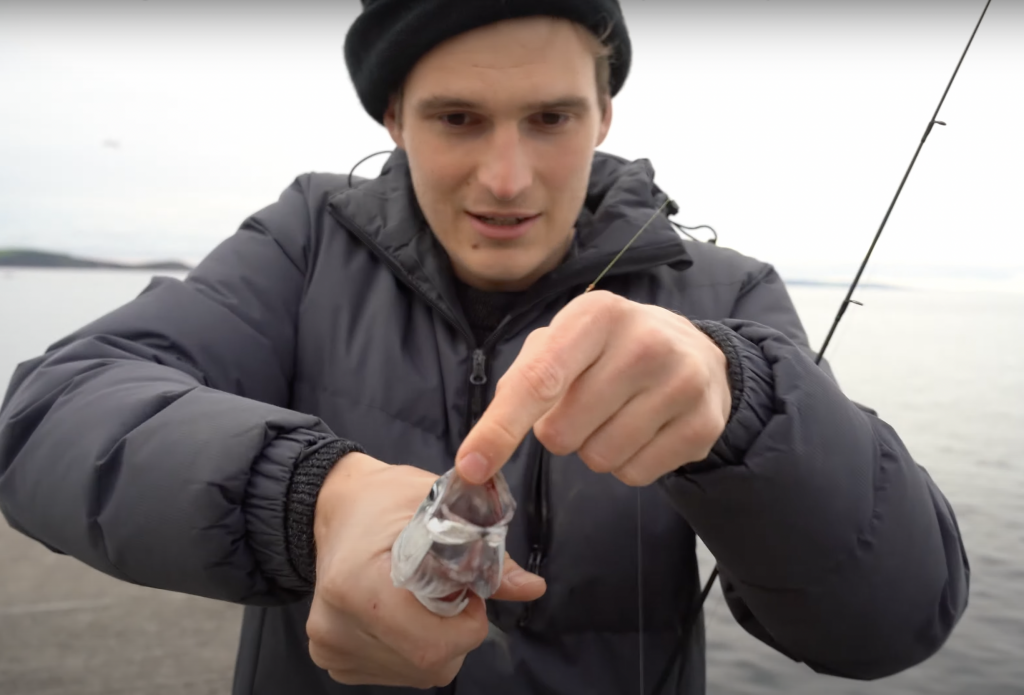
If you don’t want to break the mackerels necks, buy a priest and put it in your tackle bag so you always have it. It’s useful to have a priest anyway, because for most other species breaking the neck is not an option.
With mackerel feathers it’s fairly easy to unhook fish. However, it pays to have a set of disgorgers you can use to remove hooks if you’re using lures with treble or Sabiki hooks. It’s messy to try to unhook fish because they frequently have hooks in their mouths that are deeper than your reach, shaking their heads and possibly driving a treble into your hand.
Braid will increase the sensitivity of your rod to your rigs and enable you to cast much farther, whether you’re using a beach caster or a contemporary lure fishing outfit. As a result, you will experience every mackerel bite and cast perhaps 30% or more farther. It’s a significant improvement and you will never look back. This 25lb braid works well with beach casters. Read the complete guide to braided line in FISHMAG if you use spinning rods.
Braid has the benefit of cutting through monofilament when fishing in crowded harbors with lots of novices who might cast over your line.
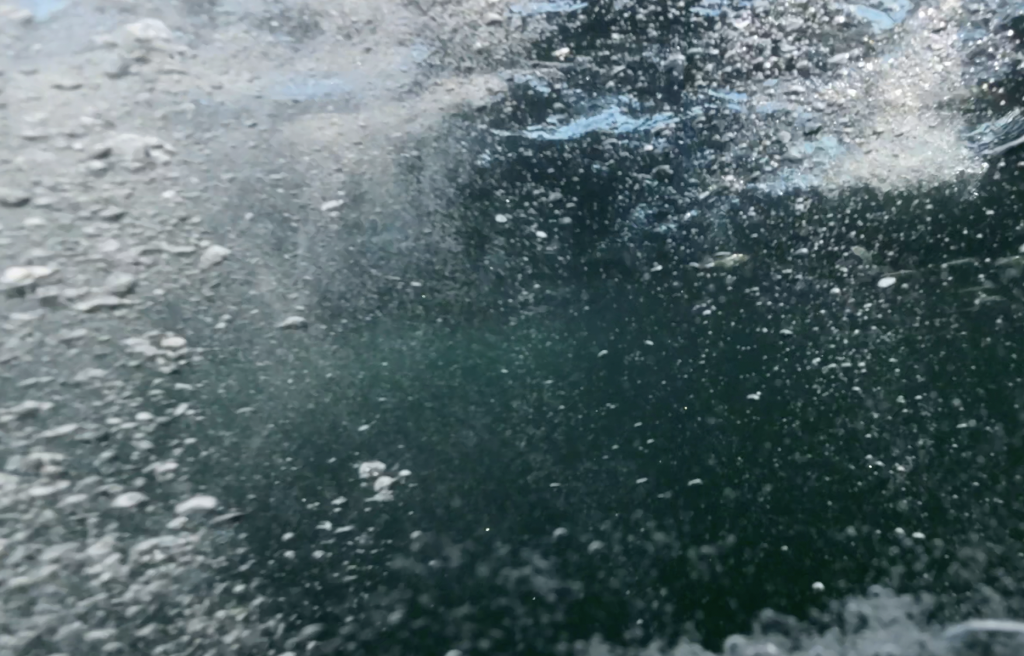
A typical error is to always cast and retrieve at the same speed, which is typically too fast. Because of this, you can only ever work your lures or feathers over the surface of the water. On the other hand, if your weight is too heavy and you reel too slowly (this is rare), you might not be searching the upper sections of the water, what if the fish are deeper?
I’ll give you an example of how this has worked out for me. Once, there were about 7 other anglers fishing when I arrived at the harbor. One week had passed and nothing had been caught. All of them were using feathers, while I was using a light spinning rod.
I was able to cast 5 to 10 meters farther than them thanks to my light braided line. Additionally, I paused for a longer period of time after my lure hit the water to determine its full depth. It turned out all my bites were near the bottom. I began casting as far as I could, letting the lure sink to the bottom where I would fish slowly, and then reeling it in very quickly just to get it back in so I could cast again. Fishing elsewhere was useless because I knew where the mackerel were feeding. Every other cast I managed to land a fish, and the harbor as a whole was filled with amazement and frustration.
Finding out where the fish are feeding is essential (and good line gives an unfair advantage, too).
Certain piers and harbors have access to areas that are more productive for catching mackerel than others. This is by the point near the light house at my local harbor in Mevagissey, Cornwall. The water is deeper and there is a channel there because boats enter and exit there. It’s also the area with the deepest water. 3-5 times as many mackerel will typically be caught from this area.
If you find yourself in a harbor, observe who is fishing and move into that area when someone leaves and you have the opportunity (without casting over anyone else’s line, of course).
I fear there is a lot of waste with mackerel feathering – it’s like a gold rush, and soon you have 50 fish you don’t know what to do with that will be gone off in 48 hours if you get them all in the fridge. Mackerel feathering is the best way to catch lots of fish for bait or for a BBQ for like 10 people – but what if you don’t have a BBQ with 10 people coming up the next day and you don’t
Mackerel can even run and take line on an ultralight lure rod. It’s a whole different experience.
You will also catch a lot more bass and other species if you switch to using single lures and purchase a modern lure rod. Even if you’ve been spinning on heavier rods for years, there are great opportunities for skill development and learning new ones.
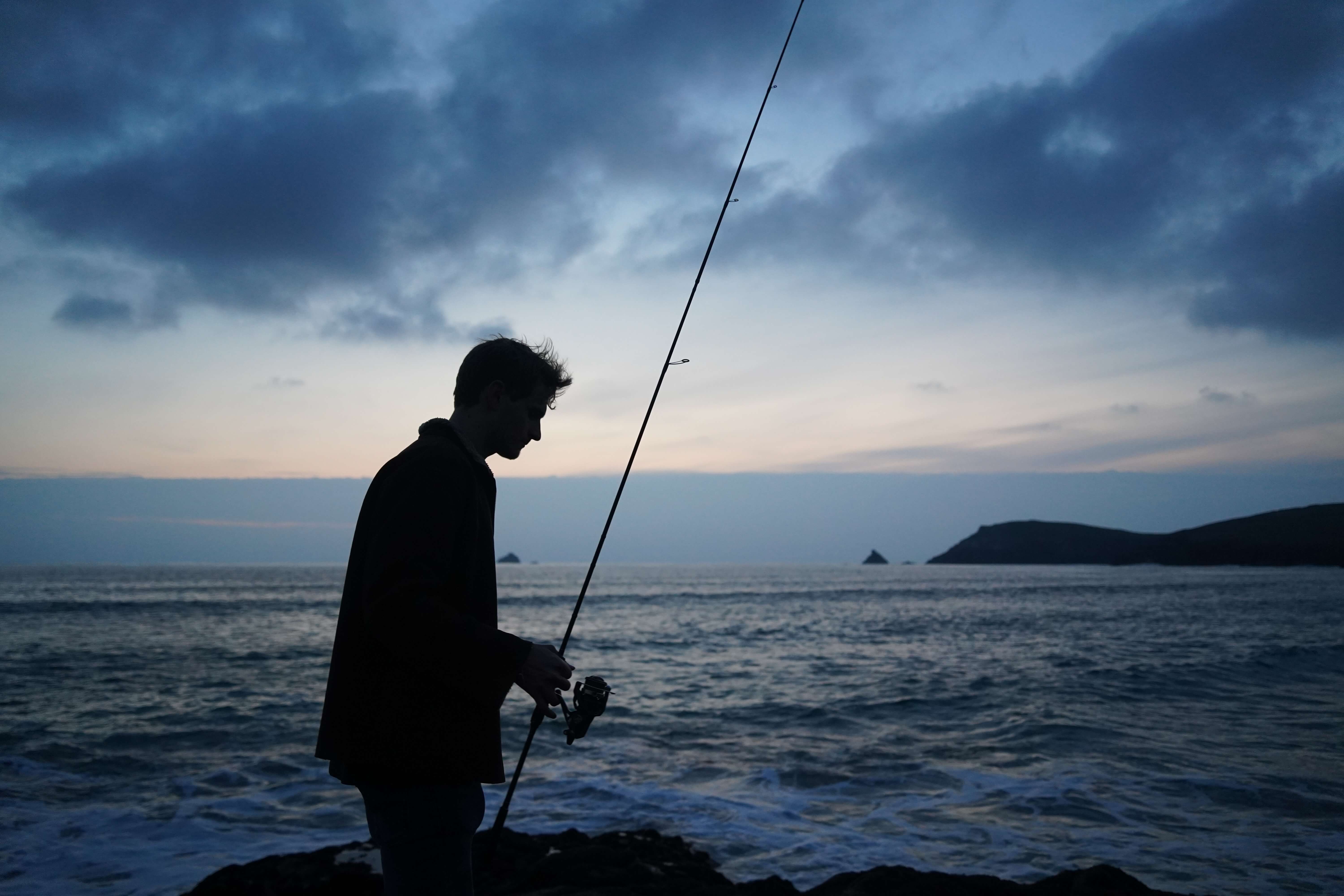
In the summer, my friends and I spend about 10 minutes fishing for mackerel in our neighborhood harbor. If casting jigs doesn’t produce any bites, we’ll switch to lure fishing for bass or wrasse.
Then we’ll begin fishing for mackerel when someone else catches a string of them. It makes sense to wait for a wave rather than fishing when no one is catching because the fish come through in waves, but it’s crucial to fish for 10 minutes first because it’s possible that everyone else is fishing too quickly (near the surface) or not casting far enough.
Jigging for Mackerel – or How to Catch Mackerel with Sabiki Bait Lures
With the boat drifting and the motor turned off (it might spook the mackerel otherwise), use a string of Sabiki Bait Lures together with a pear-shaped lead weight attached at the lower end of the string.
Jig it up and down while slowly lowering this until you feel a fish strike.
If you don’t hook up once you get to the seafloor, wind in a few turns and jig the lures a few times there before repeating the process until you do.
Concentrate your efforts on jigging at that level once you’ve found the fish.
A full house, as it is known, occurs frequently and isn’t always a good thing because the combined load of six mackerel pulling in different directions can be too much for the string of lures.
I removed the hooks from the second, fourth, and sixth lures (counting from the top down) to eliminate this risk, leaving me with a string of three active lures and three attractor lures. In this manner, the pulling power of six lures is still obtained without the need for six agitated mackerel.
Finding a shoal of mackerel is difficult without diving seabirds; you must go looking for them. And the areas to search are near headlands and along tide rips.
Mackerel Fishing Pier Access in England (Wales & Scotland below)
Central pier, South pier, North pier. Mackerel fishing access: YES (check to confirm).
Access to the Bognor Regis Pier for Mackerel Fishing: YES but check to make sure since the pier is privately owned
Boscombe or Bournemouth piers offer year-round access to mackerel fishing.
Access to the Palace Pier for Mackerel Fishing is NO LONGER ALLOWED.
No access to the Burnham-on-Sea Pier’s mackerel fishing, but you can fish from the jetty and the beach instead.
Clacton pier Mackerel fishing access: YES but you have to book here
Mackerel fishing access at Cleethorpes Pier: Unknown, but people do fish the beach
Clevedon Pier Mackerel fishing access: NO, club members only
Cromer Pier Mackerel fishing access: YES
There is no pier, but the deep water is excellent for fishing mackerel. However, it appears that fish won’t start showing up in large numbers until late April or early May in 2022, which is about the same time as usual. Mackerel fishing access: YES.
Deal Pier Mackerel fishing access is available, but tickets are necessary and can be purchased on the spot.
Access to mackerel fishing from Eastbourne Pier: YES, the pier is accessible.
Prince of Wales Pier Mackerel fishing access: YES
Access to fishing for mackerel at Felixstowe Pier is prohibited.
Harbour Arm Mackerel fishing access: YES
Gravesend Town & Royal Terrace Mackerel fishing access: : YES
Britannia Pier, Wellington Pier Mackerel fishing access: NO
Pier Mackerel fishing access: YES
Hastings Pier Mackerel fishing access: YES
Herne Bay Pier Mackerel fishing access: YES
Hythe Pier Mackerel fishing access: YES
Mackerel fishing access at Claremont Pier and South Pier: YES but verify as privately owned
Access to the St. Annes Pier for mackerel fishing is YES (be cautious of tides).
Access to fishing for mackerel from Paignton Pier is possible, but only when casting out to sea and not inside the harbor.
Yes, with a ticket purchased on-site, you can fish for mackerel off Ryde Pier.
Saltburn Pier Mackerel fishing access: YES
Access to mackerel fishing off of Culver Pier: Definitely, I believe a harbor was built here specifically for fishing…
NO, fish for mackerel from the beach rather than from Skegness Pier.
Royal Pier Mackerel fishing access: YES
Southend Pier Mackerel fishing access: YES
Southport Pier Mackerel fishing access: YES
South Parade Pier & Clarence Pier Mackerel fishing access: YES
Southwold Pier Mackerel fishing access: YES, permit required
Swanage Pier Mackerel fishing access: YES
Grand Pier Mackerel fishing access: NO, pier sunk
Princess Pier Mackerel fishing access: YES
Totland Pier Mackerel fishing access: NO.
Walton-on-the-Naze Pier Mackerel fishing access: YES
Grand Pier & Birnbeck Pier Mackerel fishing access: YES
Weymouth Pier Mackerel fishing access: YES
Worthing Pier Mackerel fishing access: YES
Yarmouth Pier Mackerel fishing access: YES
FAQ
What fishing method is used to catch mackerel?
Spinning and jigging are the two techniques for catching mackerel that are most frequently used. Both of these methods are very effective. While spinning techniques only allow you to target one fish per cast, jigging with mackerel feathers allows you to catch multiple mackerel at once.
What kind of bait do mackerel like?
With a quick retrieve, lures that resemble glass minnows, sardines, plichards, and other bait can easily fool Spanish mackerel, which enjoy a variety of small prey.
How do you set up mackerel fishing?
On some days, mackerel reject a string of feathered lures. On these days, you might want to cast a fly or a small bar spinner. Other times, fishing with a single fish bait and a float is a great strategy. The most competitive and enjoyable method of catching mackerel is using the same technique used to catch garfish.